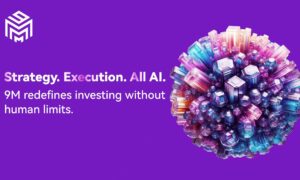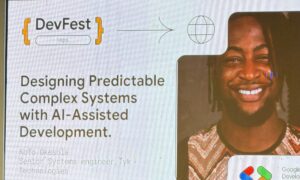A seasoned Eastern European retail banking specialist explains how personalized service starts from within — long before tech catches up.
In a financial industry racing toward full automation — from client service to decision-making — one crucial element is often missing: a deep understanding of people. As technology becomes more advanced, the real competitive edge lies not in the tools themselves but in how well they reflect human needs. Capgemini’s “Top Trends in Retail Banking 2023” report highlights a powerful shift: to stay relevant, traditional banks must evolve into lifestyle-driven platforms that seamlessly fit into customers’ everyday lives. People now expect personalized, real-time experiences — and they want banks to anticipate their needs, not just respond to them. But while systems and platforms grow increasingly sophisticated, what they often lack is emotional intelligence — the very thing that builds trust, relevance, and long-term client loyalty.
This kind of transformation is still a work in progress for many banks. However, for professionals like Daria Poddubniak, a customer-first mindset has always been part of the job. With over 18 years in retail business development at major Ukrainian financial institutions, she’s been behind initiatives ranging from mobile banker teams and customer-focused cashback products to managing large-scale client portfolios. She’s also led HR transformation, championed financial education, and helped develop future leaders through consulting and her work with the European Mentoring and Coaching Council (EMCC), where she is an active member.
From customer-centric service models to emotionally intelligent leadership, she has helped breathe life into what can often feel like a soulless, over-automated industry. In her view, real transformation happens when technology is guided by empathy, insight, and purpose — not the other way around. And that’s what she is going to share with us in this conversation.
Daria, the recent report highlights a shift in retail banking toward lifestyle-centric, personalized ecosystems. Why is this happening now, and how does it change how banks serve their customers?
I believe this shift is a response to how people’s lives have changed. Today, customers want banking to be integrated into their daily routines — not as a separate transaction but as a seamless part of their lifestyle. That means banks must understand people’s behavior, not just their accounts. It’s no longer enough to offer a product — you have to offer relevance, convenience, and trust. This shift also means banks must develop new internal capabilities: cross-functional teams, faster decision-making, and leaders who are not afraid to challenge old models. Even with all the technology available, people still create real value — through empathy, adaptability, and human insight. And the most interesting part? Many of the solutions we now see in digital platforms are just catching up with what people have needed all along. That’s what I’ve always focused on — staying close to those needs, even before the tools exist to serve them.
One of your well-known initiatives was the creation of mobile service teams consisting of trained banking advisors or service managers who acted as mobile representatives of the bank. What sparked this idea, and how did it impact customer experience?
It came from listening closely to what people wanted. Even as digital tools became more available, many still valued human connection — just without the hassle of going to a branch. By building mobile service teams, we brought that personal touch to clients’ workplaces or events. It wasn’t just a convenience feature; it was a way to build trust and connection at scale. In a way, we brought a human interface into an increasingly digital world — giving clients both the convenience of tech and the warmth of real interaction.
Today, almost every bank offers cashback — but your idea really stood out and made an impact as it became one of the standout tools in the bank’s customer retention strategy. What made it work so well, and what was different about how you launched it?
Cashback wasn’t a new concept — but how we approached it made all the difference. We didn’t just offer a bonus; we looked at real customer behavior and built the program around what people actually needed. That’s why it felt personal, not just promotional. Internally, we aligned the marketing, product, and service teams to communicate the benefits clearly. When clients feel that a product understands their lifestyle, they engage with it more deeply — and they stay loyal. But it was our people who made the service feel personal. That’s something no platform or process can replicate.
You’ve mentioned how important it is to make products and services feel personal. But when you’re working with 400,000 clients, that’s not an easy task. How did you manage to keep that human touch while working at scale?
It’s definitely a challenge when you’re working with such a large client base — but it’s absolutely possible when you build the right structure and mindset. We created clear service tiers, assigned personal managers where needed, and trained teams to handle complex inquiries efficiently. But technology alone doesn’t guarantee quality — it’s the people who deliver it. We never treated clients as just numbers; we took time to understand different customer segments and tailored our approach accordingly. That’s what keeps service meaningful, even at scale.
Leadership and culture are becoming just as important as technology in driving innovation. From your perspective, what makes them such a critical part of the transformation in the financial sector?
Because technology is just a tool, it only works thanks to the people behind it. Humans determine whether a tool, a platform, or a system succeeds or fails. Leadership sets the tone for how organizations adopt and use technology. You need leaders who can inspire change, break down silos, and guide teams toward real impact. Without that foundation, even the best technology can fall flat.
Moreover, the human element is still underestimated. You can invest in powerful tools, but if your teams don’t know how to use them to create real connections, it won’t matter. You need training, empathy, and leadership that can translate data into meaningful action. Tech should serve people — not the other way around.
Today, everything in finance seems automated — bots talk to customers, and algorithms make decisions. And yet, you’ve turned to psychology. Why? What role does it play in building strong teams and deeper customer relationships?
You’re right — today, so much of finance feels impersonal. Clients talk to bots, and algorithms make decisions. But people still want to feel understood. That’s where psychology comes in — it helps bring back the human side. It gives leaders tools to communicate better, support their teams more meaningfully, and build real trust with clients. For me, it wasn’t about changing direction — it was about going deeper. Psychology adds a layer that business tools alone can’t offer. It helps us stay connected, even in a world that’s becoming more automated by the day. That’s also what inspired me to create a business incubator that brings together business development and psychological support — helping people not just grow companies but grow as thoughtful, emotionally intelligent leaders. Because that’s exactly what the future of leadership needs.
As for your plans to launch the business incubator integrating psychology and business, could you tell us more about how it will work in practice — and what role technology will play in bringing this idea to life?
The idea is to create a space where entrepreneurs and business leaders can not only work on their strategies but also develop emotional intelligence, leadership mindset, and psychological resilience — because all of that is just as important as financial planning. The incubator will offer a mix of mentoring, diagnostics, and practical learning modules to support growth on every level.
Technology will help us make this experience more personalized and scalable. We’ll use digital platforms to deliver business and soft skills programs and AI-based tools to give participants deeper insights into their leadership styles, communication patterns, and emotional dynamics. Behavioral analytics will help track progress and tailor support along the way. It’s not about offering generic advice — it’s about creating a meaningful, individual journey for every participant so they can grow both as professionals and as leaders.



































